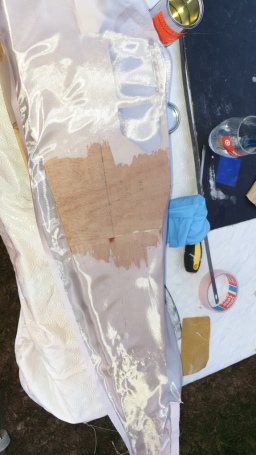I started finishing the fuselage in September.
I used a 25 g per square meter of glass fiber bonded to the nitrocellulose coating.
The fuselage is sanded to rectify as much as possible all the defects which have been corrected beforehand with light balsa coating.
Everything is ready, I’m outside, because it’s going to sniff beefy and it’s not great to breathe that.

A layer of coating is passed over the entire fuselage and the technical hatches below. Let it dry.

When dry, lightly sand to remove any fibers from the wood that you feel on the surface. We cut the fiber coupons that will be placed on the fuselage. Attention, the fiber is super fragile, so I used masking tape to put in the place of the cut and thus avoid that “it frayed”.

I covered with a layer of nitrocellulose coating starting at the center.

Do not forget to cut the passage of the control cables

The layer is put, it is left to dry.

The advantage of nitrocellulose coating is its rapid drying capacity. 30 minutes later, excess fiber can be removed. To do this, always Alallou technique, a wedge to sand on the edges. It’s fast and efficient.

The upcoming sequel, I was caught by the night … The days are much shorter in September and during the day I work.
However, I will be quick because I have to take advantage of the good weather.
It would be impossible to do this indoors, or with a gas mask.




